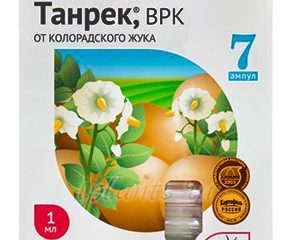Content
Worms in raspberries are a fairly serious problem for many gardeners. Often this misfortune can spoil the entire impression of a bountiful harvest. Indeed, it is extremely unpleasant to see crawling white worms among the scarlet juicy berries. However, there is a way out of this situation. To rid raspberries of worms, it is necessary to carry out a number of preventive measures, as well as treat the plantings with special preparations.
Why are raspberries wormy?
Any fruit is a kind of battery of nutrients. Therefore, almost every fruit tree or shrub has insect pests. Parasitism on fruits is the easiest way for insects to breed offspring and provide them with the necessary amount of food.
Unfortunately, raspberries are no exception. The berries of this shrub have a good supply of nutrients, so pests use them to breed their offspring.
What pests live in raspberries
Strictly speaking, it is not worms that live in raspberries, but larvae of several types of insects. One of them is the cluster leaf roller. This is a small-sized butterfly, the larvae of which can develop not only in raspberries, but also on currants, grapes, and sloe.
The insect is quite prolific; one mature individual can lay eggs in 70 flower ovaries or berries. The larvae, hatching after 6-10 days, develop inside for 2 weeks, actively feeding on the contents of the fetus. Due to damage to the integrity of the berry shells, it rots. The larvae of the cluster leaf roller are white, have a segmented body about 1 cm long with a dark head.
The second insect pest whose larvae develop in raspberries is the raspberry beetle. The insect is small in size (about 5 mm), it has a pubescent body of a brownish-red color.
The clutch of a female beetle usually contains about 30 eggs. They hatch into yellowish larvae with a dark head. Their length is 5-6 mm. The larvae feed on the pulp of raspberries, then gnaw through the fruit, fall to the ground and pupate. There is only one development cycle of the raspberry beetle per season.
What to do if raspberries are wormy
It is much easier to prevent the appearance of worms in raspberries than to fight them later. Unfortunately, their presence in berries is often revealed only during the harvesting process. At this time, special preparations cannot be used, otherwise the fruits will not be edible. All that remains is to manually sort the berries and then make jam or compote from them. To speed up the process, the fruits are poured with slightly salted cold water. After half an hour, the worms will leave their hiding places and float to the surface.All that remains is to carefully collect and destroy them, and rinse the berries with clean water and put them into processing.
How to treat raspberries against worms in berries
To treat raspberries against pests, you can use both ready-made industrial preparations and a variety of folk remedies.
Spraying raspberries against worms with insecticides
It is necessary to use insecticides if the pest is detected at an early stage. In addition, the use of chemicals is justified if there were a lot of wormy raspberries in the previous season. Before the start of the budding phase, plants are treated with the following preparations:
- Actellik.
- Bi-58.
- Inta-Vir
- Spark.
- Karbofos.
- Kinmiks.
- Confidor.
- Phosbecide.
- Fufanon.
- Fury.
The treatment is usually repeated twice. Application intervals and required dosages are indicated on the drug packaging.
How to get rid of worms in raspberries using folk remedies
Among the folk remedies for treating raspberries against worms in berries, many are quite effective. Here are some of them:
- Treatment with boiling water. In early spring, raspberry plantings are sprayed with hot water. The procedure not only kills pest larvae, but also strengthens the plant’s immunity.
- Spraying with potassium permanganate. For 10 liters of water you will need 0.5 g of potassium permanganate. The diluted solution should be slightly pink.
- Tincture of tobacco (shag). 200 g of tobacco leaves are poured into 10 liters of boiling water. After the infusion has cooled to normal temperature, it can be strained and used to spray raspberries. The effect will be better if you give the tobacco leaves more time to infuse, at least 1 day.
- Tansy infusion. Dried herb in the amount of 350 g is poured into 10 liters of boiling water. It is advisable that the solution boil for another 20-30 minutes. After this, it is cooled, filtered and used to process raspberries.
- Mustard infusion. To prepare the solution, 100 g of mustard powder is poured with boiling water and stirred until it becomes sour cream. Then the composition is added to 1 bucket of water, stirred well and sprayed.
- You can use it once every 10 days to treat raspberry bushes. aqueous soda solution (1 tbsp per bucket of water). The procedure can be performed repeatedly until fruit ovaries appear on the bush.
Agrotechnical measures for obtaining a raspberry harvest without worms
To reduce the number of white worms in raspberries to a minimum, the necessary measures to combat them must be taken in advance. It is very important to keep the raspberry garden clean, promptly cut out dried shoots, remove fallen leaves, debris and plant debris. Mulching the soil is of great importance. Covering the root space in early spring with a layer of mulch made from peat, humus or rotted manure will retain moisture in the soil and serve as feeding for raspberries. In addition, a layer of mulch will be an additional obstacle that makes it difficult for overwintered insect pests to emerge from the soil, which will significantly reduce their population. But in late autumn it is better to remove the mulch layer and dig up the root zone of the raspberry tree. In this case, most of the raspberry beetle larvae will freeze out in winter.
To protect against leaf roller butterflies, many gardeners cover raspberry plantings with gauze or non-woven material that allows air to pass through. In this way, the pest is deprived of access to fruit ovaries and berries, making it impossible to lay eggs.Special traps effectively destroy leaf roller butterflies. If the appearance of raspberry beetles is noted on the plantings, then these insects can simply be collected early in the morning. While it’s cool outside, the beetles sit motionless on the raspberry leaves, and it won’t be difficult to shake them off onto the newspaper you have stored. You can simply spread plastic wrap under the raspberries and shake the entire bush.
Advice from experienced gardeners
Many years of practice helps to successfully control pests on raspberries. Here are some tips from experienced gardeners that will help preserve the harvest and prevent worms from appearing in the berries.
- To prevent raspberries from becoming wormy, it is better to grow them on trellises. Free-growing bushes quickly thicken, and this provokes the appearance of worms in the berries. The trellis method guarantees compliance with the required intervals between raspberry bushes.
- Old shoots that bear fruit must be cut out. Dry branches are a breeding ground for pests.
- In early spring, it is advisable to treat raspberry plantings with fungicides (Bordeaux mixture). This is an excellent prevention of both diseases and pests.
- Many chemical worm sprays for raspberries cannot be used in mixtures or at the same time. When carrying out stepwise (multiple) treatments, the drugs must be alternated, otherwise the pests may develop immunity.
- Before preparing a solution for spraying, be sure to study and strictly follow safety precautions.
- On remontant raspberry varieties, worms in berries are much less common. This is worth paying attention to when choosing planting material.
- The population of pests and the number of worms in berries can be significantly reduced if wood ash is used as a top dressing for raspberries.
- If raspberries grow in open, well-ventilated places, then wormy berries are much less common.
- Treating raspberries with hot water in early spring and autumn kills not only pests, but also pathogens of fungal diseases.
- When collecting beetles by hand, it is better to use rubber gloves, otherwise your hands will smell unpleasant for a long time.
An interesting video on how to grow raspberries without worms can be viewed at the link below:
Conclusion
It is not difficult to rid raspberries of worms if you regularly care for the plantings and do not neglect them. Most of the activities for this are not difficult and even novice gardeners can do it. It is important to perform them regularly and in full, then the result will be pleasantly surprising.















